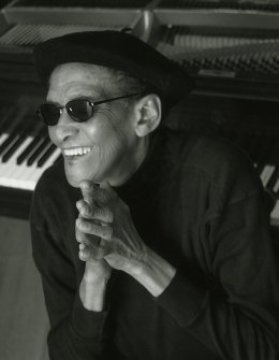Angela McCluskey, “Times Square”, 2001, “The Things We Do”, Manhattan Records/Blue Note
Born in Glasgow in February of 1960, Angela McCluskey was a Scottish singer and song writer who performed both as a solo artist and a founding member of the Wild Colonials, an alternative rock band formed in Los Angeles, California. She began her music career at London’s EMI Records, first as a publicist and  later employed in its video department. In London at an Indian restaurant in 1989, McCluskey met pianist and composer Paul Cantelon, whom she married.
later employed in its video department. In London at an Indian restaurant in 1989, McCluskey met pianist and composer Paul Cantelon, whom she married.
McCluskey and Cantelon relocated to the Hollywood area of Los Angeles, California. An impromptu 1992 jam session at the Irish coffee house Café Beckett brought together McCluskey, her husband Paul on violin and piano, guitarist David “Shark” Shaw, and Scott Roewe on bass, keyboards and saxophone. They were later joined by Ian Bernard on drums and percussion. This jazz session evolved into the Wild Colonials with future performances at Molly Malone’s Irish Pub and Café Largo, a popular nightclub and cabaret.
The Wild Colonials’s regular appearances at the Café Largo venue led to a contract with Geffen/DCG. Both their first two albums, the 1994 “Fruit of Life” and the 1996 “This Can’t Be Life” were released to critical acclaim. As a result of these successful releases, Wild Colonials became a headliner at the 1997 Lilith Fair. During this period, McCluskey also worked with many musical artists including Malcolm John Rebennack Jr (Dr. John); Cyndi Lauper; Michel Sanchez and Éric Mouquet (Deep Forest); and Joseph Lee Henry. In 2000, she released “Curio”, an album of torch songs recorded with Paul Cantelon, violinist Lili Haydn and cellist Martin Tillman.
Angela McCluskey relocated to Paris in 2001 and sang with the French electronic music trio Télépopmusik.  She provided the vocals on Télépopmusik’s 2001 album “Genetic World” which included the successful “Breathe”, co-written with Stephan Haeri and Fabrice Dumont. Later reissued as a single in 2002, “Breathe” became a dual UK/US chart hit, a 2004 Grammy nominee, and a memorable theme song for Mitsubishi, Peugeot, and Visa Europe. McCluskey also lent her vocals to several songs on the Télépopmusik’s second studio album, the 2005 “Angel Milk”.
She provided the vocals on Télépopmusik’s 2001 album “Genetic World” which included the successful “Breathe”, co-written with Stephan Haeri and Fabrice Dumont. Later reissued as a single in 2002, “Breathe” became a dual UK/US chart hit, a 2004 Grammy nominee, and a memorable theme song for Mitsubishi, Peugeot, and Visa Europe. McCluskey also lent her vocals to several songs on the Télépopmusik’s second studio album, the 2005 “Angel Milk”.
In 2004, McCluskey released her debut solo album “The Things We Do” through the Manhattan Records/Blue Note label. Photographer and filmmaker Bruce Weber featured McCluskey and Paul Cantelon in his 2007 short film “Wine and Cupcakes” shot in New York’s Central Park. In this film, she does a spoken voice-over of “If I Ruled the World” and sings the 1934 jazz standard “Autumn in New York”. McCluskey released her second solo album in 2009, the “You Could Start a Fight in an Empty House” which included the song “Handle with Grace” backed by Télépopmusik. This album was followed by the 2011 “Here Comes the Sun” and two extended-play albums “Handle with Grace” and “Lambeth Palace”, all three recorded through New York’s Bernadette Records.
In 2014, Angela McCluskey wrote and performed “Catch a Falling Star”, a one woman play that focused on her Scottish upbringing and a brief encounter with Nina Simone. Having heard McCluskey’s vocals on Pandora in 2016, the electronic hip hop/jazz duo Big Gigantic featured her on their 2017 song “ The Little Things”. In the same year,  McCluskey released through Bernadette Records “The Roxy Sessions”, a solo album recorded at New York City’s Roxy Hotel that featured a wide range of vocal styles. Her last recorded work was the January 2021 four-song EP “Between Ourselves” released exclusively on Bandcamp.
McCluskey released through Bernadette Records “The Roxy Sessions”, a solo album recorded at New York City’s Roxy Hotel that featured a wide range of vocal styles. Her last recorded work was the January 2021 four-song EP “Between Ourselves” released exclusively on Bandcamp.
Through her career, Angela McCluskey worked with such artists as the electronic swing band Parov Stelar; rapper and songwriter Kendrick Lamar Duckworth; DJ and producer Morgan Wolf Page; Nigerian duo Kehinde Hassan and Taiwo Hassan (Christian Rich); Bill Leeb and Rhys Fulber (Delirium); singer and songwriter Ambrosia Nicole Parsley; and Guns N’ Roses guitarist Richard Fortus. Angela McCluskey died at the age of sixty-four on the 14th of March in 2024 after falling into a coma following an emergency operation for a torn artery.
The Angela McCluskey website can be found at: http://www.angelamccluskey.com






































